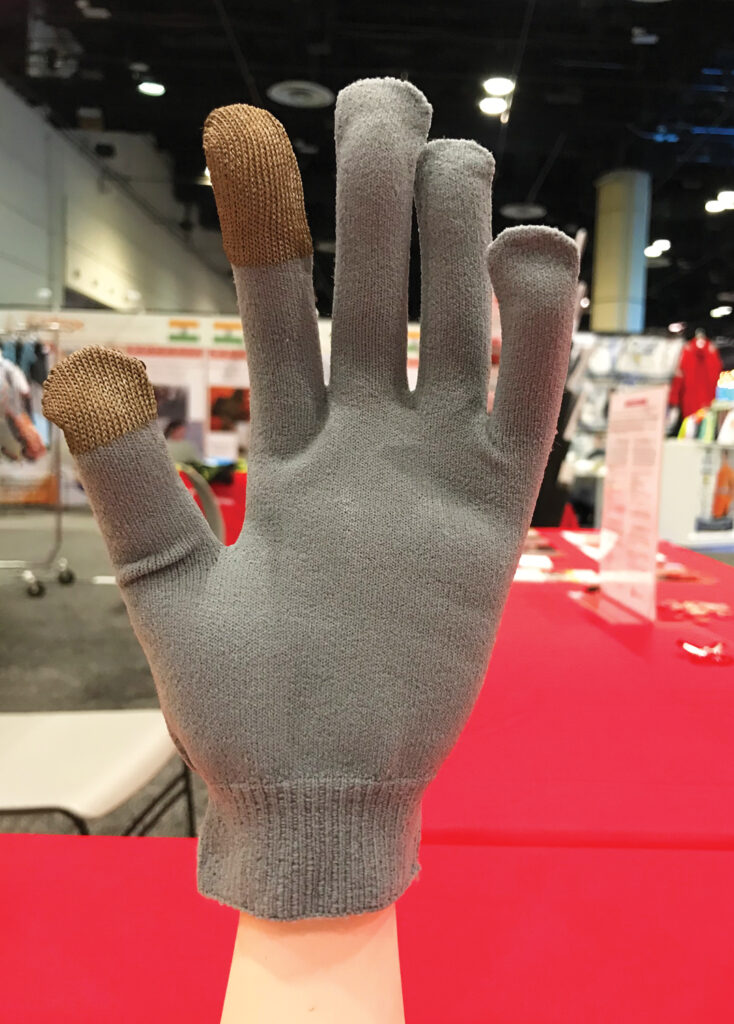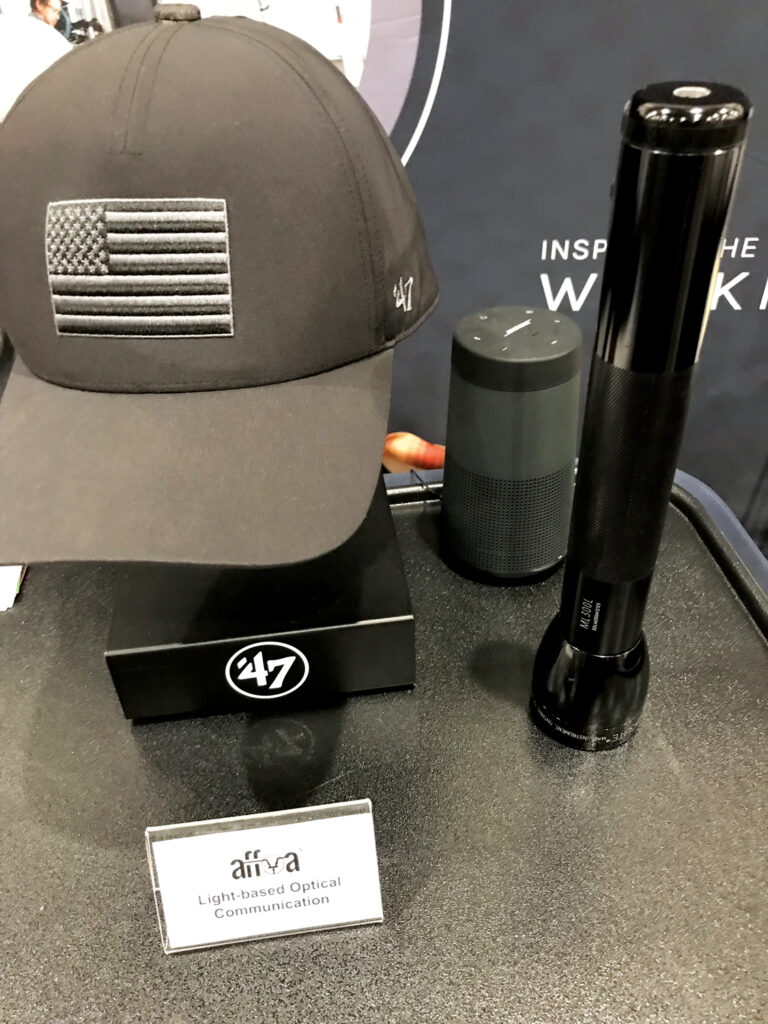
Smart textiles that use specialized polymers, chemical additives or electronics to react with their environment are changing textile technology in the 21st century. E-textiles or “wearables” have been particularly promising due to their ability to monitor and communicate data to provide sensory feedback, promote health and safety, and improve athletic training.
Some early examples of wearables, such as the adidas MiCoach heart rate monitoring bra, Levi’s® Commuter Trucker Jacket with Jacquard™ by Google and CuteCircuit’s sparkly dresses, have come and gone. They exposed e-textiles’ fundamental drawback to commercialization: the complexity of efforts needed to develop tests and standards for the electronic components as well as textile standards for comfort, breathability, stretch, torsion, abrasion, durability and washability.
Rethinking how to test
E-textiles and wearables have not had a good reputation for reliability. “Products that hit the market 10 years ago have not been reliable, and consumers are disappointed,” says Vladan Koncar, Ph.D., professor with the National Graduate School of Arts and Textile Industries (ENSAIT), University of Lille in Lille, France, and director of international relations with its GEMTEX Laboratory. “Companies don’t test enough,” he adds. “They put a product out to market and see if there are no complaints. This is
a big problem.”
While specialized markets such as military, medical and sports are all in, the lack of standards and reliability, along with the expense of e-textiles, have proven hurdles to commercialization—and, unfortunately, there is no single organization or regulatory body in charge of developing these standards.
Signs of progress
The need for e-textile test methods and standards is keenly felt, according to Chris Jorgensen, director of technology transfer at IPC, a nonprofit global association that is a leader in developing electronics standards. IPC’s E-Textile Committee comprises industry volunteers from Belgium, Canada, France, Germany, Malaysia, Pakistan, Sri Lanka, Taiwan, the U.K. and the U.S.
“In 2017 we were approached by companies in the e-textile sector with the need for test methods and standards,” says Jorgensen. As of 2023, IPC has eight task groups and action teams (A-Teams) within those task groups that are focusing on e-textiles and wearables.
In 2019 IPC released its first e-textiles standard: IPC-8921, “Requirements for Woven and Knitted Electronic Textiles Integrated with Conductive Fiber, Conductive Yarns and/or Wires.” In 2022, IPC-8952, “Design Standard for Printed Electronics on Coated or Treated Textiles and E-Textiles” was published, along with IPC-8971, “Requirements for Electrical Testing
of Printed Electronics on Textiles.”
According to Jorgensen, the development and publication of each standard can take two or three years to complete. The teams cross-reference and draw on the work of each other and can also rely on decades of electronics standards development from other IPC committees. “This has sped up the process of e-textiles standard development,” he says.
IPC standards that are currently in development include:
- IPC/JPCA-8911, “Requirements for Conductive Yarns for E-Textile Applications,” which will include at least six new test methods, is expected to see its final draft some time in 2024.
- IPC-8921A, a revision of the earlier standard, with requirements for the performance of woven, knitted and braided e-textiles.
- IPC-8981, “Quality and Reliability of E-Textiles Wearables,” will establish 15 testing requirements for mechanical and exposure characteristics, including washability.
- IPC-8961, “Guidelines on E-Textiles Wearables,” planned for 2025, will reference IPC-8981 as a guideline
for designers and manufacturers
of wearables. - IPC-8953, “Design Standard for Embroidered E-Textiles,” which draws on the work of IPC-8952 (“Design Standard for Printed Electronics on Coated or Treated Textiles and E-Textiles”).
- IPC-8922, “Qualification and Performance Specification for Printed Electronics or Coated or Treated Textiles and E-Textiles,” which will be a counterpart to IPC-8952.
IPC is accredited by the American National Standards Institute as a standards-developing organization and is known globally for its standards.
Collaborative work
Stakeholders in the world of e-textiles need to work collaboratively. Diana Wyman, executive vice president and former technical director for the American Association of Textile Chemists and Colorists (AATCC), remarks, “At AATCC, we make sure we reach out and coordinate with other groups.”
In 2016, the AATCC formed the committee RA111 for Electronically Integrated Textiles, and in 2019 it published EP 13, a method of evaluating the electrical resistance of electronically integrated textiles. “Knowledge transfers in all directions,” says Wyman. “While we work collaboratively with IPC, documents are not formally reviewed by the other organization.”
Current industry leaders are intrinsically concerned with the development of standards. Sahar Rostami, senior textile engineer for Textile Computing™ company Myant Inc., chairs some of IPC’s A-teams, such as those for standards IPC-8921-A and IPC-8911. Myant knits sensors and actuators into wearables, including its Skiin line of connected clothing.

A smart textile ecosystem
The Smart Textile Alliance (STA) exemplifies this approach, according to founder and CEO Christian Dalsgaard. “Our mission is to lead the smart textile industry to its full potential by developing standards and facilitating industrial collaboration,” he says.
The STA is working to develop a smart textiles ecosystem supporting the development of industry standards as well as a supply chain that will promote plug-and-play solutions “for anyone who wants to make electronics soft and textiles smart.” Its Smart Textile Stack™ is a directory of trusted hardware and software suppliers, along with a network of designers and academics in the field that Dalsgaard refers to as “ambassadors.”
“What we need are the key big players in the industry to come together to build the standards so that when we have a standard, the industry is quick to adopt it because it comes from the leaders in the industry,” Dalsgaard says.
“Another factor that can speed up the progress is the pull from the market for smart textile products and an increased awareness about such products among consumers,” he continues. “When there is demand, there will be momentum that will drive the industry to have all its pieces in place much faster.”
Koncar at ENSAIT is another key member of IPC’s E-Textiles Committee who chairs the A-Team on IPC-8981, which focuses on reliability standards for wearables. “The advantage of the university is that the students can do testing, measurements, etc.,” he says. He also points out that with funds coming from the military and medical segments, “more and more companies are developing specifically for professional applications.”
Jan Beringer, Ph.D., senior scientific expert for international research and testing foundation Hohenstein Institute, engages with industry groups including manufacturers of workwear, personal protective equipment (PPE) and performance apparel, occupational safety and health institutes, and manufacturers of testing devices. He points out that in Europe, e-textiles not only need to be tested to standards but are required to be certified with the CE marking, signaling that the product meets high safety, health and environmental protection requirements.
Along with a group of industry colleagues, he is currently working on a guideline to develop both electrical and textile standards for an LED-illuminated, high-visibility safety jacket. Because there are no standards for “active illumination,” the guideline needs to be integrated with an existing standard.
“The assessment method is a real challenge,” he admits. “Standards are always product-related, and we need product to test.”
The washability question
E-textile wearables must be part of everyday living if they are to achieve their full potential. Ranging from medical devices and clothing worn daily against the skin to activewear, outerwear and PPE, the need for washability standards is essential. “Washability triggers a lot of conversation,” says Jorgensen.
Rostami agrees. “Researchers and industry constantly look for solutions to improve durability and washability such as conformal coating or injection molding to protect electronic components.”
“We have to make these textiles washable at home,” says Koncar. “Probably in the future we will have standards, or some companies that manufacture washing machines may make adaptive cycles for e-textiles.”
An impossible dream?
While stakeholders remain enthusiastic about the opportunities for smart textiles, standards and supply chains would help promote manufacturing at scale so that products are both affordable and reliable for consumers. At the same time, consumer demand for products is needed to drive industry growth and facilitate faster development of tests and standards.
“We believe that an industry body would be able to address some of these challenges that we face across the industry and by bringing together the right stakeholders, implement an ecosystem that promotes the development and growth of smart textile companies,” says Dalsgaard.
“It will be an ongoing process—not the end of the road,” Wyman says.
“We are very much on the way, with more to come,” says Koncar.
“The e-textile space is still a growing industry,” says Jorgensen. “We are proud of the work being done by leaders in this industry to provide industry standards, which will improve reliability of product, reduce manufacturing costs and ensure an apples-to-apples comparison of materials and product.”
Debra Cobb is a freelance writer with expertise in the textiles industry. She is based in North Carolina.
 TEXTILES.ORG
TEXTILES.ORG


